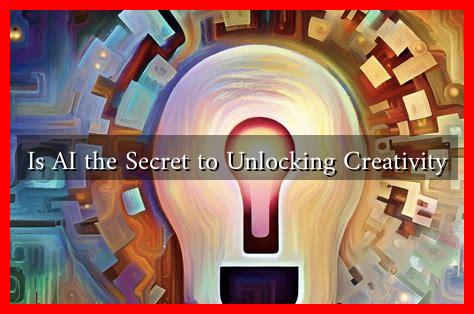-
Table of Contents
Is AI the Secret to Unlocking Creativity?
In recent years, artificial intelligence (AI) has made significant strides in various fields, from healthcare to finance. However, one of the most intriguing applications of AI is its potential to enhance and unlock human creativity. This article explores how AI can serve as a catalyst for creative expression, the implications of this partnership, and the future of creativity in an AI-driven world.
The Intersection of AI and Creativity
Traditionally, creativity has been viewed as a uniquely human trait, characterized by the ability to generate novel ideas and solutions. However, AI technologies, particularly those based on machine learning and neural networks, are beginning to challenge this notion. By analyzing vast amounts of data, AI can identify patterns and generate content that mimics human creativity.
How AI Enhances Creative Processes
AI can enhance creativity in several ways:
- Idea Generation: AI tools can assist in brainstorming sessions by providing suggestions based on existing data. For instance, platforms like Copy.ai use AI to generate marketing copy, helping marketers overcome writer’s block.
- Content Creation: AI can create music, art, and literature. For example, OpenAI’s DALL-E 2 can generate images from textual descriptions, allowing artists to visualize concepts quickly.
- Personalization: AI can analyze user preferences and tailor creative content to individual tastes. Streaming services like Spotify use AI algorithms to curate personalized playlists, enhancing user engagement.
Case Studies: AI in Action
Several notable examples illustrate how AI is being used to unlock creativity across various domains:
- Music: The AI-generated album “Hello World” by the startup AIVA (Artificial Intelligence Virtual Artist) showcases how AI can compose original music. AIVA analyzes existing compositions to create new pieces that resonate with listeners.
- Visual Arts: The artwork “Edmond de Belamy,” created by the Paris-based art collective Obvious, was generated using a Generative Adversarial Network (GAN). The piece sold for $432,500 at auction, highlighting the market’s acceptance of AI-generated art.
- Writing: The novel “1 the Road,” co-authored by AI and human writers, demonstrates how AI can contribute to storytelling. The AI analyzed thousands of texts to generate narrative ideas, which were then refined by human authors.
The Benefits and Challenges of AI in Creativity
While the integration of AI into creative processes offers numerous benefits, it also presents challenges:
- Benefits:
- Increased efficiency in content creation.
- Enhanced collaboration between humans and machines.
- Access to a broader range of ideas and perspectives.
- Challenges:
- Concerns about originality and authorship.
- Potential job displacement in creative industries.
- Ethical considerations regarding AI-generated content.
The Future of Creativity in an AI-Driven World
As AI continues to evolve, its role in the creative landscape will likely expand. The future may see:
- Greater collaboration between AI and human creators, leading to innovative works that blend human intuition with machine efficiency.
- New forms of art and expression that challenge traditional boundaries and redefine what it means to be creative.
- Continued discussions around the ethical implications of AI in creativity, ensuring that human values remain at the forefront of technological advancements.
Conclusion
AI is not merely a tool for automating tasks; it has the potential to unlock new dimensions of creativity. By enhancing idea generation, content creation, and personalization, AI can serve as a powerful ally for artists, writers, and innovators. However, as we embrace this technology, it is crucial to navigate the challenges it presents thoughtfully. The future of creativity may very well depend on our ability to harmonize human ingenuity with artificial intelligence, creating a landscape rich with possibilities.

